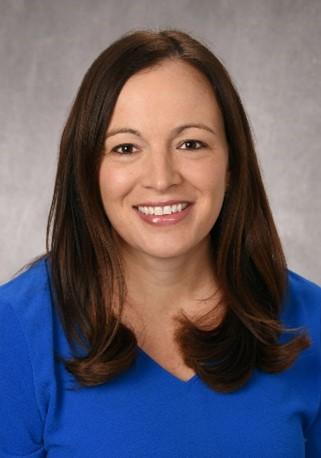Bright Futures
Articles and Updates from Phoenix Children's
Cystic fibrosis (CF) is an inherited disorder in which the body makes a thick, sticky mucus that can cause severe problems in the lungs, digestive system and other organs in the body. It is relatively rare, affecting about 40,000 people in the United States, and while there is no cure for the disorder, scientists are making significant strides in developing treatments that are allowing people with CF to live longer and healthier lives.
It's an exciting time to be a pulmonologist because treatments for CF are becoming more and more effective, and a greater number of people are candidates for new therapies. I’m sharing these 10 facts to know about CF so the general public can understand where we’ve been – and where we’re going.
1. Most people with CF receive their diagnosis after a newborn screening.
Every state in the U.S. routinely screens newborns for cystic fibrosis. Arizona has been performing CF newborn screenings since October 2007. In most states, this screening involves checking the blood sample for a protein called immunoreactive trypsinogen (IRT), which is released from the pancreas. If it is elevated, we then run a genetic mutation panel on the same blood sample to identify if the infant has genetic mutations that are known to cause CF. Diagnosis by newborn screening allows us to start preventative therapies before the baby develops symptoms, which prevents malnutrition and lung damage. Newborn screening is not perfect, so if a child or adult has symptoms that are concerning for CF, they should undergo sweat chloride testing regardless of their newborn screen result. Most people will have symptoms in early childhood, but in some cases, doctors don’t detect cystic fibrosis until a child is older or even into adulthood.
2. CF is genetic.
People with cystic fibrosis typically have two copies of the defective CFTR gene – one from each parent. If a person only has one copy of the gene, they are a carrier, but they don’t have the disorder themselves. Often, they aren’t even aware they’re carrying the gene. While CF is an inherited disease, most people who receive the diagnosis don’t have a family history of cystic fibrosis. As a result, parents are often surprised when their newborn is diagnosed.
3. Effective treatment for CF is proactive and preventative.
As soon as a newborn or child is diagnosed with cystic fibrosis, doctors should begin therapies to help them to maintain their health. We start:
- Pancreatic enzyme supplementation to help them absorb the nutrients they need from breast milk or formula
- Salt supplementation because they lose more salt in their sweat, putting them at risk for dehydration
- Fat-soluble vitamin supplements because many need extra calories to support good weight gain
- Regular airway clearance therapy to prevent lung infections and lung damage
By promoting good nutrition and preventing lung infections, we may be able to delay complications for many years.
4. Not every child with CF reacts the same way.
There are some children who will go for years without having any infections or needing to be hospitalized, while other children need to be hospitalized regularly for treatment. While most people think cystic fibrosis only involves breathing problems and gastrointestinal issues, it can also affect the sinuses, liver, reproductive system and people with CF are at increased risk of diabetes. That’s why both children and adults with CF often need to see several different specialists.
5. Children with CF often have to see many different specialists.
Phoenix Children’s has one of only two accredited cystic fibrosis programs in Arizona. We care for both children and adults in our multidisciplinary program, which includes pulmonologists, nurse practitioners, respiratory therapists, dietitians, pharmacists, social workers and physical therapists trained specially in cystic fibrosis.
In addition to pulmonologists, a person with CF may need to see other physician specialists such as a gastroenterologist, endocrinologist or otolaryngologist (ear, nose and throat doctor). We know how difficult it is to see so many different specialists – especially when you don’t live close by. That’s why we offer a variety of combination clinics, allowing your child to see both providers during one visit.
6. Treatments for CF have improved dramatically in recent years.
The primary problem in cystic fibrosis is that the CFTR protein – located on the cell surface of the tissues that line the lungs and gastrointestinal– does not function normally to allow salt and water to move across that cell, which leads to thick and sticky secretions.
Through the years, various medications have addressed the downstream effects of CFTR dysfunction, but none have addressed the root problem itself – until modulator therapy. Cystic fibrosis transmembrane conductance regulator (CFTR) modulator therapies are designed to help correct the abnormal protein function in some CF patients depending on their genetic mutations. People can take these medications by mouth, which is much easier than time-consuming breathing treatments and airway clearance therapies. We’ve seen incredible progress with modulator therapies in the past few years and we remain hopeful there will eventually be a cure for cystic fibrosis.
7. A very small percentage of CF patients will need a lung transplant.
Sometimes, a person with cystic fibrosis will have such severe lung damage that they will need a lung transplant. Two decades ago, CF patients comprised about 10% of lung transplants. Today, however, they comprise only 2 to 3% – in large part because modulator therapy has been so successful.
8. Children with CF look just like everyone else.
CF has been referred to as an invisible disease because most children and adults with CF look outwardly healthy, which can be deceiving to the inward battle they are fighting. Most people with CF spend between one and three hours daily performing airway clearance therapies to keep their lungs healthy. They may need to miss school or work when they are sick in order to allow for extra airway clearance therapies and IV antibiotics.
9. There are more adults than children with CF.
For many years, the majority of cystic fibrosis patients were children because life expectancy was not very long. However, since 2017, the adult population of CF patients has been larger than the youth population. That’s remarkable for a disorder that has always been thought of as a pediatric disease. Thanks to new and improved medications, patients with CF are living longer and healthier lives.
10. Children with CF have a bright future.
Today, more people with cystic fibrosis than ever are going to college, pursuing advanced degrees and careers, and starting families. Many women with CF are having babies. The median life expectancy for a patient is mid 50’s and continually rising. The incredible progress we have seen in CF care gives the entire CF community great optimism for continued improvements in life expectancy and, eventually, a cure.
Learn more about cystic fibrosis treatment at Phoenix Children’s.




